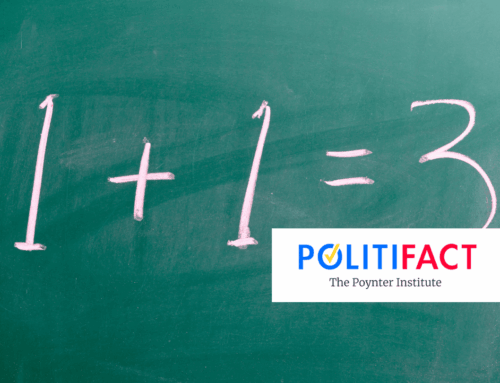Despite the fiscal year being almost half over, negotiations over the 2024 budget continue. The next deadline for lawmakers is Friday, March 1, when funding will run out for part of the federal government. The rest runs out the week after, on March 8. And while the appropriations process can be some of the ugliest sausage-making in Congress, this episode has been particularly messy and there’s better than decent chance that some of government shuts down even for just a few days. The real problem here is that a deal was made to avoid this whole situation four months before fiscal year 2024 started. But lawmakers—a subset of House Republicans in particular—wouldn’t take incremental progress on reducing spending and move on to the next fiscal fight. When lawmakers refuse to compromise, it’s taxpayers who are left paying the price.
Let’s recap:
Back in April, then-House Speaker Kevin McCarthy demanded statutory budget caps as a condition for raising the debt limit, which was about to be breached. This set the stage for negotiations that culminated in President Biden signing the Fiscal Responsibility Act (FRA) into law on June 3, 2023, which established budget caps for two years and temporarily suspended the debt limit through January 1, 2025. For more of our thoughts on the debt ceiling, click here.
Just a week after passing this deal, House Republicans announced their intention to reduce federal spending below the agreed upon levels, partly in response to intense criticism from conservative factions within the party. This led to a period from June to July 2023 where House Republican appropriators drafted bills that called for funding levels significantly below those of the budget deal, while Senate appropriators wrote and reported out funding bills at the higher levels. Ultimately the House passed seven of the twelve spending bills to fund government (one bill also failed on the floor) and the Senate passed three. But none have been conferenced into final legislation that could be passed and sent to the President’s desk.
As the fiscal year drew to a close, and both sides were still far apart on funding levels (budget deal notwithstanding), Congress passed the first continuing resolution (CR) just hours before a potential government shutdown on September 30, 2023, extending discretionary government funding through November 17.
A few days later, Rep. Matt Gaetz (R-FL) filed a motion to vacate the speakership which ultimately resulted in eight Republicans joining all Democrats to oust Rep. McCarthy as speaker of the House on October 3, 2023. After a series of failed votes to elect a new speaker, Mike Johnson (R-LA) was elected as the new speaker on October 25, 2023.
As the first deadline of November 17 approached without a full budget agreement, Congress enacted a second continuing resolution, extending discretionary government funding through January 19, and some through February 2. A third continuing resolution was then enacted on January 19, extending discretionary government funding again, this time through March 1, and some government funding through March 8.
This current plan includes a deal between Senate Majority Leader Chuck Schumer (D-N.Y.) and House Speaker Johnson on the overall spending levels of $1.66 trillion for FY2024, with defense increasing to $886 billion, while non-defense spending remaining roughly the same as in fiscal 2023, at nearly $773 billion.
Late on Friday January 26 Senate Appropriations Chair Patty Murray (D-WA) and House Appropriations Chair Kay Granger (R-TX) announced agreement on the allocation of these funds, enabling lawmakers to proceed with setting specific funding levels for each program and office in government agencies.
This won’t be easy. Lawmakers are keen to avoid consolidating all 12 measures into a single omnibus bill, a common practice in recent years. Under a provision of the FRA, a continuing resolution extending into May would trigger across-the-board cuts. Even if appropriations bills are passed by the March deadlines, agencies will face the challenge of efficiently allocating funds, as the fiscal year would already be nearly half over.
Complicating the situation are ongoing negotiations over supplemental funding for the timely issues of foreign aid and border security. On February 13, the Senate passed an amended version of a $95 billion national security supplemental, by a vote of 70-29, allocating funds for Ukraine, Israel, Taiwan, and operations in the Red Sea. This followed the Senate’s failure to advance a larger $118.3 billion national security supplemental, which also included funds border security funding and reforms demanded as a condition by some Republicans for support for foreign aid. It wasn’t enough and the larger bill was eventually reconsidered and passed without the border security provisions, but its future in the House is murky.
Meanwhile, the House passed a bipartisan $78 billion tax bill, “The Tax Relief for American Families and Workers Act,” by a vote of 357 to 70, that would expand the Child Tax Credit and restore business tax breaks, including immediate deductions for R&D costs reduced by the 2017 Tax Cuts and Jobs Act. Despite its success in the House, its future in the Senate remains uncertain, with some lawmakers seeking changes and hearings.
As we have said many times before, this dysfunction in Congress has costs. And not just the uncertainties that come with the threat of government shutdowns and workforce furloughs. Two important pieces of legislation, the Senate-passed security supplemental and the House-passed tax bill, both passed with overwhelming bipartisan support—not something that happens every day. Nevertheless, the prospects for either bill, along with the months delayed FY2024 budget, are fair to middling.










